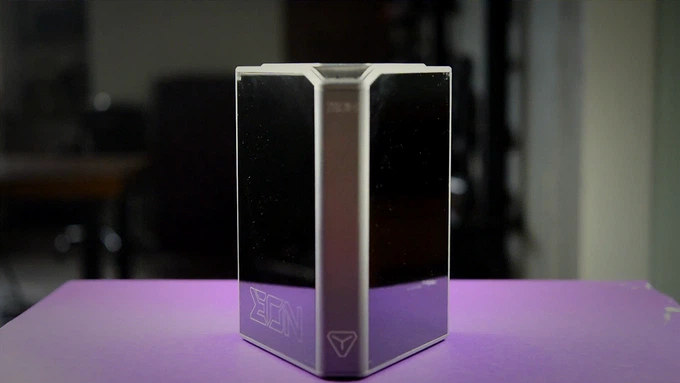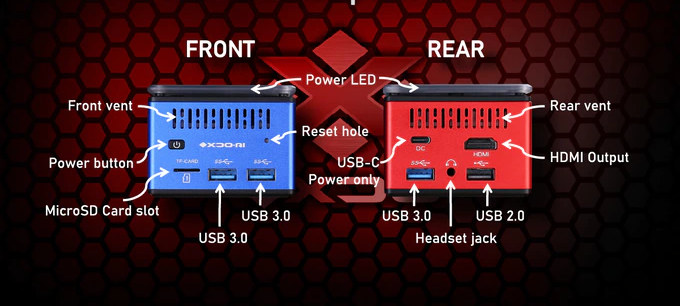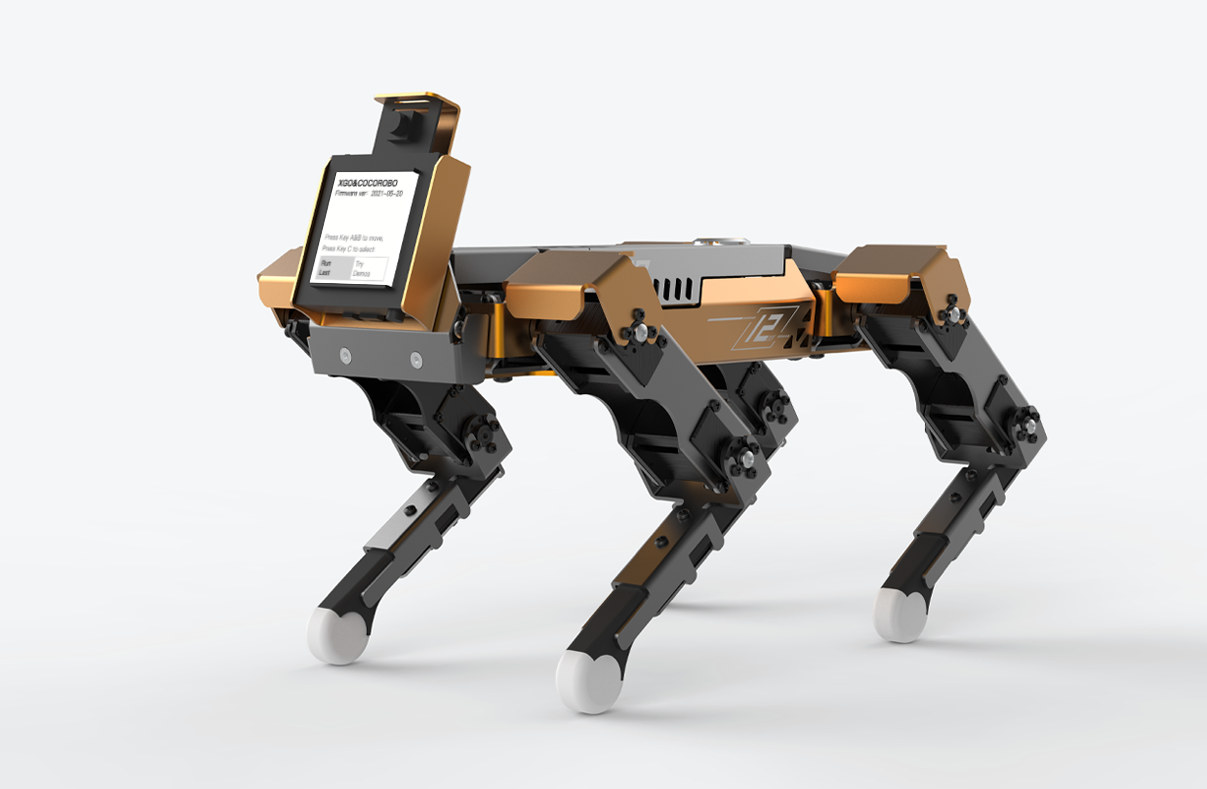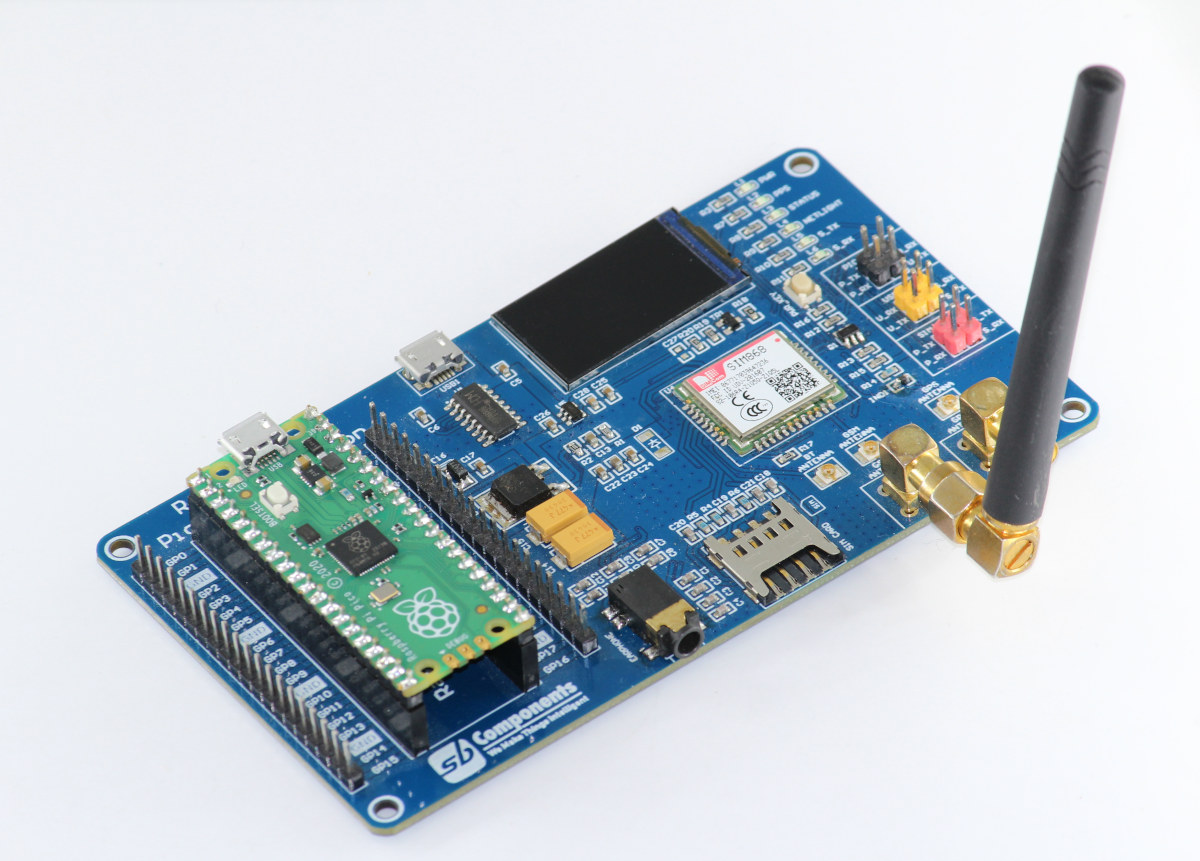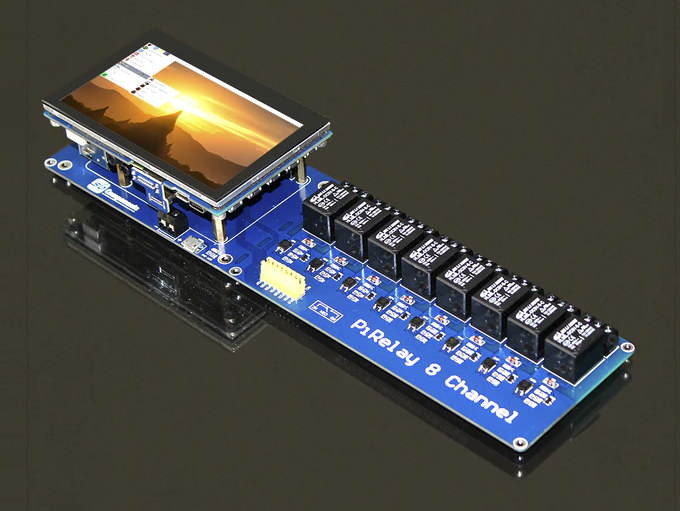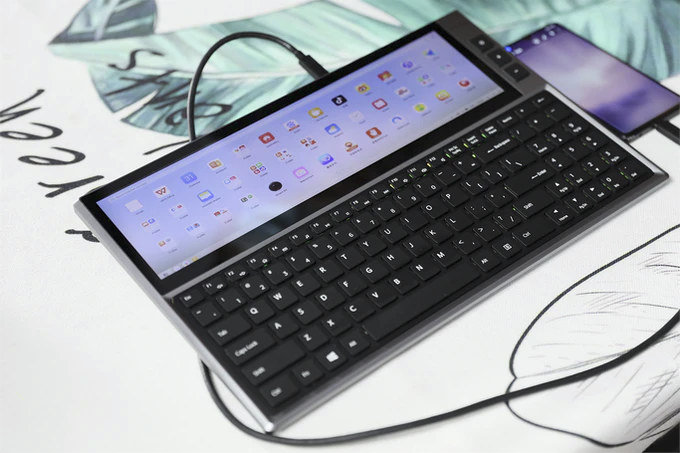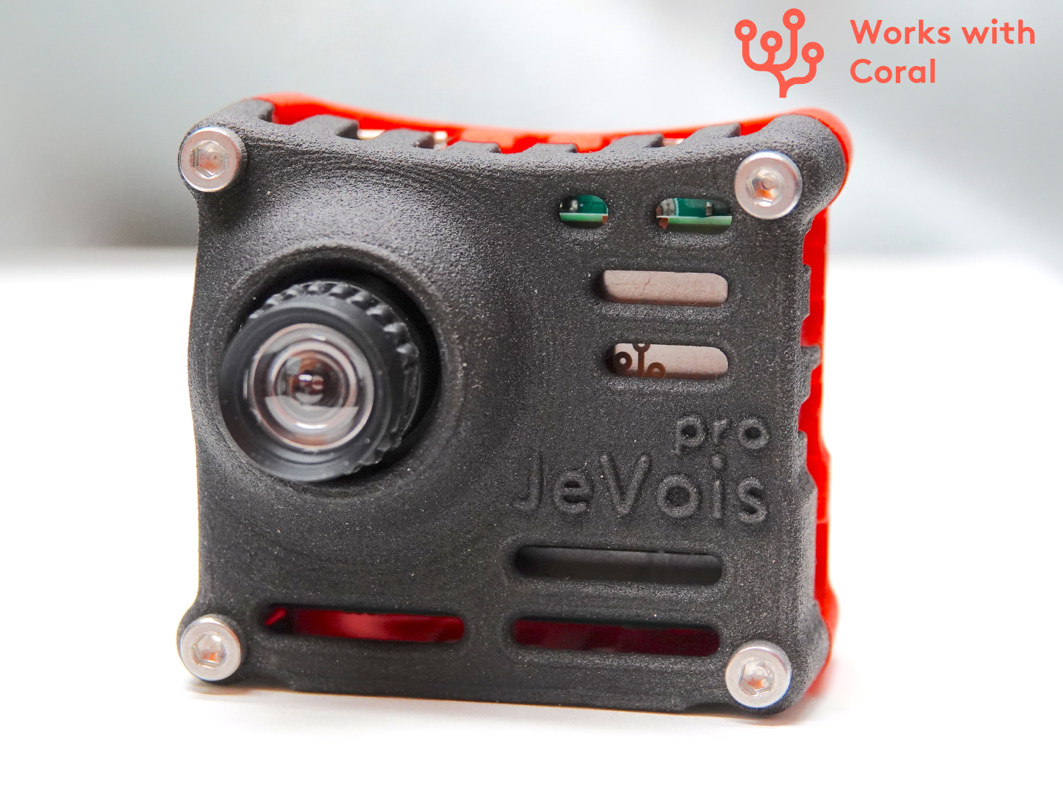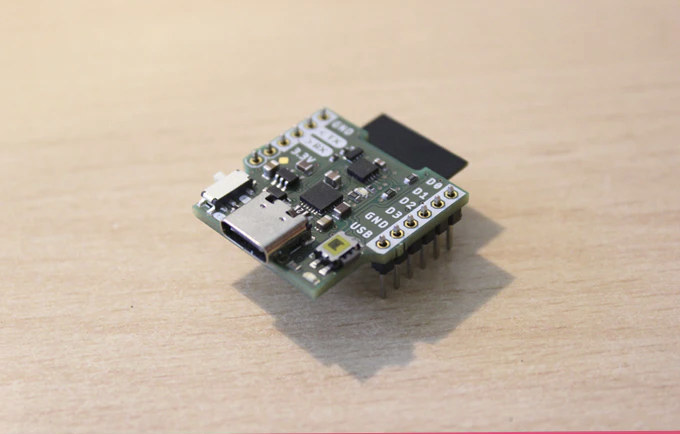Argon EON is a 4-bay network access storage (NAS) enclosure designed to work with Raspberry Pi 4 that follows other popular Raspberry Pi cases from the company including the Argon One and Argon One M.2. Also known as the Argon EON Pi NAS, the enclosure features four SATA hard drive ports that will fit two 3.5-inch SATA HDD and two 2.5-inch SATA for a maximum capacity of up to 40 TB with consumer-grade drives, although I suppose it’s not a hard limit. Argon EON Pi NAS specifications: Supported SBC – Raspberry Pi 4 SBC with Broadcom BCM2711 quad-core Cortex-A72 processor, up to 8GB RAM Storage 4x SATA drive bays with up to 2x 3.5-inch HDD, and up to 2x 2.5-inch SSD/HDD with up to 10TB capacity per drive MicroSD card socket (for OS) Video and audio outputs – 2x full-size HDMI 2.0 ports up to 4Kp60, AV jack with composite […]
Pantera Pico PC ultra-compact mini PC ships with Windows 10 or Ubuntu (Crowdfunding)
The Pantera Pico PC is an ultra-compact Gemini Lake Refresh mini computer similar to the Chuwi Larkbox Pro, that was supposed to launch in December 2020 through an Indiegogo campaign. Let’s say there have been delays, and the company – XDO Tech – has only just launched the Pico PC on Kickstarter for $149 and up. Pantera Pico PC specifications: SoC – Intel Celeron J4125 quad-core Gemini Lake Refresh @ 2.0 / 2.7 GHz (Turbo) / 2.4 GHz (Turbo all cores) with Intel UHD Graphics 600 @ 250/750 MHz; 10W TDP System Memory – Dual-channel 4GB or 8GB LPDDR4 Storage – 64 GB to 1TB M.2 2242 SSD, MicroSD card socket Video Output – HDMI 2.0 up to 4Kp60 Audio – 3.5mm speaker/microphone jack, digital audio via HDMI Connectivity Dual-Band WiFi (allegedly WiFi 6, but limited to 422 Mbps?), Bluetooth 5.1 USB – 3x USB3.0, 1x USB2.0 Misc – Power button, […]
XGO Mini Pro robot dog features Kendryte K210 AI processor (Crowdfunding)
[Update: Initially published on July 30th, XGO Mini Pro robot dog is now up on Kickstarter. While it was listed on the Kendryte K510 product page, it is only offered with the earlier Kendryte K210 in the crowdfunding campaign] Kendryte K510 RISC-V AI processor is the successor of Kendryte K210 with much more AI processing power (2.5/3 TOPS) that makes it suitable for robotics projects demanding much lower latency and quasi-real-time inference. One of the first products to be compatible with both Kendryte K510/K210 capabilities is Luwu Intelligence Technology’s XGO Mini Pro, a four-legged robot that looks like a dog with a tiny head providing the “smarts” for the system including face detection, image recognition, object tracking, voice recognition, and so on. We first found the description of the robot on Canaan’s website is rather short with an explanation that when equipped with is equipped with a 9-axis IMU and […]
Pico 2G Expansion adds GSM/GPRS & GNSS to Raspberry Pi Pico (Crowdfunding)
You may have heard about the 2G/3G sunset with the older cellular networks being phased out in many countries. But it’s not always straightforward, as telecom operators may have to obtain regulators’ permission for the shutdown notably because of the eCall emergency services integrated into cars in Europe. Eventually, eCall will be migrated toward IMS Voice and 2G M2M services to 4G LTE IoT and 5G LPWA, but in the meantime, 2G networks are still operating in parts of the world, and UK-based SB Components has just introduced the Pico 2G Expansion board for Raspberry Pi Pico based on the SIM868 module. Raspberry Pi Pico 2G Expansion specifications: Compatible with Raspberry Pi Pico board Display – 1.14-inch LCD Cellular & GNSS Connectivity SIM868 module with GPRS multi-slot class 12/10, mobile station class B GSM 850/900/1800/1900 MHz GNSS – GPS/GLONASS/BDS Bluetooth 3.0 with audio support SIM card holder 2x SMA antenna […]
Relay expansion board for Raspberry Pi includes 4.3-inch touchscreen display (Crowdfunding)
There are plenty of multi-relay boards for Raspberry Pi, but since those are often combined with an HMI for control, SB Components decided to offer an all-in-one solution with an expansion board equipped with eight relays and a 4.3-inch touchscreen display connected to a Raspberry Pi via HDMI and USB. PiRelay 8 specifications: Relays 8x relays with 3.3V/5V trigger signal Input – 250V AC/7A, 30V DC/10A Screw terminal blocks NO (Normally Open) and NC (Normally Closed) modes available Isolation – EL357NC optocouplers with current transfer ratio (CTR) of 50-600% at IF=5mA, VCE=5V Display support – Optional 4.3-inch touchscreen display with 800 x 480 pixels resolution, HDMI input for video, USB for touchscreen support. It also comes with a 3.5mm audio jack, an HDMI audio output, a speaker connector, and mounting holes for the Raspberry Pi. 40-pin GPIO header to connect a Raspberry Pi SBC (Pi 4, Pi 3B+, Pi 3, […]
FICIHIP multifunctional keyboard includes 12.6-inch touchscreen display (Crowdfunding)
Keyboards have made the news in recent months with stories ranging from a customizable programmable keyboard, to a keyboard part of a USB-C dock, and a 2-key open-source keypad. FICIHIP multifunctional keyboard is special in its own way as besides a traditional QWERTY keyboard is also includes a 12.6-inch touchscreen display which makes it looks like a computer, but no, it’s really just a USB keyboard that happens to come with a display design for computers and smartphones. FICIHIP multifunctional keyboard key features and specifications: QWERTY keyboard with RGB backlight and hot-swappable mechanical keycaps for DIY layout on K2 model only Display – 12.6-inch screen with 1920×515 resolution @ 60 Hz, 10-point multitouch panel HDMI input – HDMI 1.4 port USB – USB 3.1 Type-C port, 2x USB 2.0 ports Aluminum body That means the keyboard acts as a second display either through the USB-C port when connected to a […]
Jevois Pro small AI camera with Amlogic A311D SoC offers up to 13 TOPS (Crowdfunding)
Jevois-A33 smart camera was a tiny Linux camera with Allwinner A33 processor designed for computer vision applications and announced in 2016. I had the opportunity to review the computer vision camera the following year, and it was fun to use to learn about computer vision with many examples, but since it relied on the CPU for processing, it would not have been suitable for all projects due to the lag, as for example, object detection took 500ms and Yolo V3 around 3 seconds per inference. But time has passed, and great progress has been made in the computer vision and AI fields with the tasks now usually handled by a built-in NPU, or an AI accelerator card. So JeVois Pro deep learning camera has just been launched with an Amlogic A311D processor featuring a 5 TOPS NPU, and support for up to 13 TOPS via a Myriad X or Google […]
The Axon platform offers WiFi & LoRa IoT messaging in a compact form factor (Crowdfunding)
Qortex (Amine Mehdi Mansouri) has developed the WiFi & LoRa IoT messaging platform to allow devices to communicate wirelessly via serial messages. The solution also includes a wireless serial port and 4 digital outputs. The tiny Axon board is based on ESP8266 WiFi SoC and can be augmented with a LoRa module for a longer range, and the solution integrates with the Axon cloud for data visualization in the cloud. There’s also a HAT expansion board for Raspberry Pi compatibility. Axon board specifications: Wireless module – ESP12-S ESP8266 2.4 GHz WiFi 4 module USB – USB Type-C port for power and programming via CP2102 Expansion – 2x 6-pin header with GPIOs, UART, 5V, 3.3V, and GND Misc – Status LED, Reset button, USB/MCU (UART) selection switch Power Supply 5V input via USB-C port 3.3V/600mA LDO PTC fuse, reverse polarity protection, ESD protection Dimensions – 30 x 25 mm The board […]


